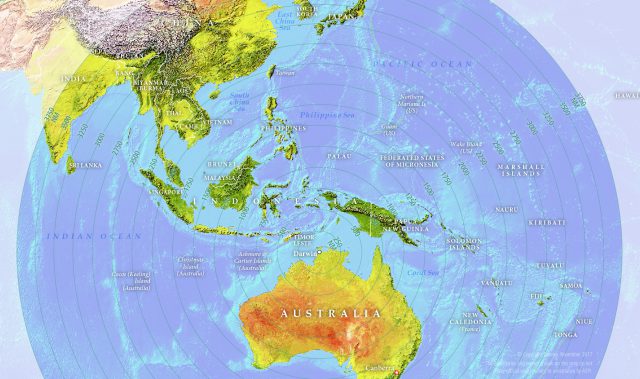
Australia’s strategic outlook is deteriorating and, for the first time since World War II, we face an increased prospect of threat from a major power. This means that a major change in Australia’s approach to the management of strategic risk is needed.
Strategic risk is a grey area in which governments need to make critical assessments of capability, motive and intent. Over recent decades, judgements in this area have relied heavily on the conclusion that the capabilities required for a serious assault on Australia simply didn’t exist in our region. In contrast, in the years ahead, the level of capability able to be brought to bear against Australia will increase, so judgements relating to contingencies and the associated warning time will need to rely less on evidence of capability and more on assessments of motive and intent. Such areas for judgement are inherently ambiguous and uncertain.
In particular, China’s economic and political influence continues to grow, and its program of military modernisation and expansion is ambitious. The latter means that the comfortable judgements of previous years about the limited levels of capability within our region are no longer appropriate. The potential warning time is now shorter, because capability levels are higher and will increase yet further. This observation applies both to shorter term contingencies and, increasingly, to more serious contingencies credible in the foreseeable future.
It’s important not to designate China as inevitably hostile to Australia, and to recognise in any case that there would be constraints on the expansion of its military influence. Beyond the short to medium term, there would be intrinsic difficulties in operating in waters potentially dominated by Indian anti-access capabilities, and there’s potential, too, for Indonesia to develop significant sea-denial capabilities. Nevertheless, China’s aggressive policies towards the South China Sea and elsewhere are grounds for concern that it seeks political domination over countries in its region, including countries in Southeast Asia and including Australia. It’s China, therefore, that could come to pose serious challenges for Australian defence policy.
We need also to keep a watchful eye on Indonesia against the possibility that Islamist extremism will come to dominate that country. This isn’t the country’s current trajectory, but the security consequences for Australia of such a development would be severe, especially if Indonesia over the years ahead were to become a major regional power.
How should Australia respond? Contingencies that are credible in the shorter term could now be characterised by higher levels of intensity and technological sophistication than those of earlier decades. This means that readiness and sustainability need to be increased: we need higher training levels, a demonstrable and sustainable surge capacity, increased stocks of munitions, more maintenance spares, a robust fuel supply system, and modernised operational bases, especially in the north of Australia.
For the longer term, the key issue is whether there’s a sound basis for the timely expansion of the ADF. In many ways, the expansion base is impressive, in that relevant capabilities already exist or are in the forward program, although not necessarily in the right numbers. Matters that would benefit from specific examination include the development of an Australian equivalent of an anti-access and area denial capability (especially for our vulnerable northern and western approaches) and an improved capacity for antisubmarine warfare.
The prospect of shortened warning times now needs to be a major factor in today’s defence planning. Much more thought needs to be given to planning for the expansion of the ADF and its capacity to engage in high-intensity conflict in our own defence—in a way that we haven’t previously had to consider. Planning for the defence of Australia needs to take the new realities into account, including by re-examining the ADF’s preparedness levels and the lead times for key elements of the expansion base. The conduct of operations further afield, and Defence’s involvement in counterterrorism, mustn’t be allowed to distract either from the effort that needs to go into this planning or from the funding that enhanced capabilities will require.
This is the executive summary of an ASPI Strategic Insights paper, Australia’s management of strategic risk in the new era, released today. Print This Post
Print This Post